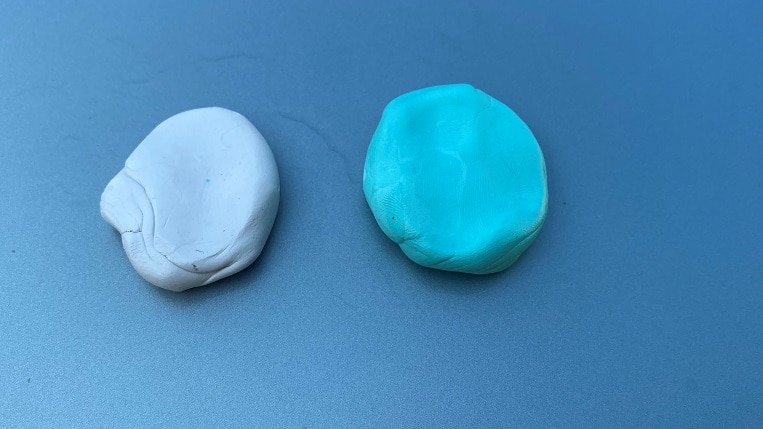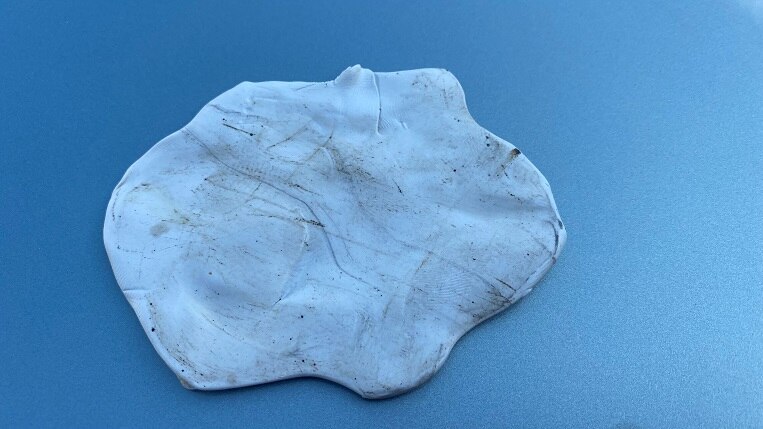Car detailing clay is an essential but often overlooked step in deep-cleaning a vehicle. Pro cleaners and weekend enthusiasts can use clay bars on paint and glass after washing to remove loose dirt and debris from the surface.
Detailing clay works by grabbing bonded surface contamination and safely lifting it away. Always use car shampoo or a dedicated clay lube to prevent paint from scratching during the clay bar process. In addition to plenty of lubrication, kneading the clay when it becomes dirty is imperative. You shouldn’t rub one panel of the car with another panel’s contamination.
Use a clay bar by rubbing back and forth in a straight-line motion like when performing a hand car wash. Never use circular motions when clay barring a car because it can cause paint swirl marks. Take steps to maximize the lifespan of a clay bar and minimize the risk of paint marring. Start at the top of the car and work down to the bumpers and rocker panels. If you drop a clay bar on the ground mid-detail, discard it. A contaminated bar can cause expensive damage that requires a paint correction.
Car Detailing Clay Explained
Clay Bar Grades
Clay bars come in three grades, and the type and level of contamination will help determine which one is most appropriate. The fine-grade clay bar would be the best choice if the vehicle had a recent paint correction or a ceramic coating.
Fine Grade Clay – Fine Clay is an excellent choice for new cars or if you decontaminated the paint in the past six to 12 months. The least aggressive of all three clay bar grades has plenty of power to remove contamination and is gentle even on the softest paints.
Medium Grade Clay – Clay bar kits available online or at local auto parts stores typically include medium-grade bars. A step up in decontamination power will help remove years of bonded environmental and industrial contamination. The middle-grade clay bar is suitable for eliminating baked-on bug guts, paint overspray, road tar, tree sap, and other hard-to-remove contamination.
Aggressive Grade Clay – Aggressive clay isn’t a product for typical car detailing. However, it can be helpful for extreme contamination removal. Accidental exposure to large amounts of contamination or years of neglect may require using the aggressive grade. Pros recommended performing a paint correction after using an aggressive clay bar because the risk of marring the paint increases compared to the less assertive clay bar grades.
Clay Bars vs. Clay Mitts
Both clay bars and clay mitts come in various grades and remove bonded contamination, but that is where the similarity ends. Clay bars tend to be gentler on the paint. Removed contamination gets embedded in the clay, so users should fold clay bars to expose fresh material after cleaning each car section. Collected contamination rinses off of clay mitts in a bucket of water.
Clay mitts can save time when cleaning heavily contaminated surfaces. However, they should not be the first choice for a well-maintained car. The increased speed sometimes comes at the cost of paint defects. However, detailers may address minor flaws if polishing the paint afterward.
How Often to Clay Bar?
How often a car must be clayed depends on the annual mileage and contamination exposure. Based on usage and storage, cars should be clayed every six to 12 months. Vehicles with long daily commutes and outside parking may benefit from more frequent clay bar treatment.
High-impact areas like the front bumper, mirrors, or rocker panels may require additional claying between decontamination details. Using a clay bar to remove stubborn contamination is better than scrubbing it with a wash mitt or microfiber towel. Excessive scrubbing can result in paint marring that is especially visible on dark-colored paint.
Clay Bar Instructions and Tips
Depending on its size, a clay bar might be large enough to decontaminate four vehicles or more. It is a good practice to break the clay bar into multiple portions before using it. The pieces should be large enough to handle easily but small enough that you won’t suffer as much loss if you drop the clay bar accidentally.
Avoid claying in direct sunlight, especially in warmer climates, because the car’s surfaces can easily exceed 100 degrees Fahrenheit and cause residue to be left behind, which will require additional cleaning and result in the clay bar wearing out prematurely.
If you are in a colder climate and have difficulty cutting or kneading the clay, place it in warm water to soften. Clay bars are stiff but pliable when the temperature drops below 50 degrees.
Clay Bar Step-by-Step Instructions:
- Perform a hand car wash, but don’t bother to dry the car unless water spots are a concern.
- Flatten a section of the clay bar to a comfortable size for your hand.
- Spray clay bar lubricant on a few square feet of a panel.
- Use light pressure to rub the clay bar back and forth in a straight-line motion until no more resistance can be felt or heard.
- Knead the clay bar until it is clean and repeat the previous step in the opposite direction over the previously cleaned area.
- Knead the clay bar again and move to the next area of the car, repeating the previous steps.
- Perform a hand car wash to remove any dislodged contamination left behind while using the clay bar.
- The next step is to perform a paint correction or apply paint protection, depending on how comprehensive the car detailing job is.












